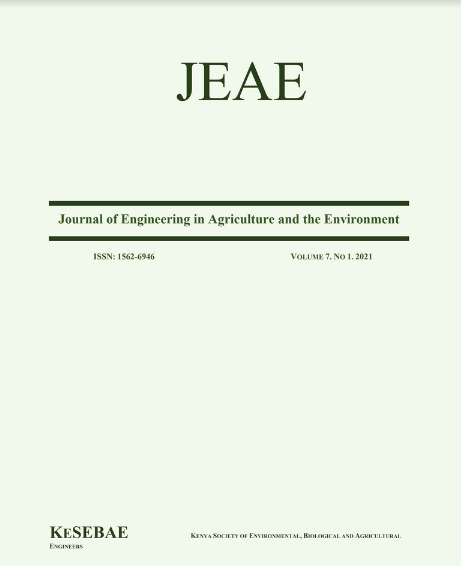Abstract
Concrete paving blocks were first introduced in Holland to replace paver bricks which had become scarce due
to the post-war building construction boom. In Kenya, paving blocks are used in construction of pavements in
both residential and commercial areas. They can be used in areas with light or heavy traffic. Rice husks are a
byproduct of rice and its disposal has always been a challenge in Kenya. When the husks are burnt, they produce
rice husks ash which was used in this study as partial replacement of cement at 5%, 10%, 15% and 25%.
Compressive strength and water absorption tests were carried out. As the content of rice husks increased,
compressive strength decreased. At 5% and 10% replacement ratios, concrete compressive strength was
36.76MPa and 33.79MPa. which is suitable for use in light traffic areas. Water absorption increased as rate of
replacement increased. However, it was below 5% recommended by ASTM.
References
Al-Khalaf, M. N., & Yousif, H. A. (1984). Use of
Rice Husk Ash in Concrete. International
Journal of Cement Composites and
Lightweight Concrete, 6(4), 241–248.
https://doi.org/10.1016/0262-5075(84)90019-8
Bui, D., Hu, J., & Stroeven, P. (2005). Particle Size
Effect on the Strength of Rice Husk Ash
Blended Gap-Graded Portland Cement
Concrete. Cement & Concrete Composites -
CEMENT CONCRETE COMPOSITES, 27,
–366.
https://doi.org/10.1016/j.cemconcomp.2004.05
.002
Chindaprasirt, P., & Rukzon, S. (2008). Strength,
Porosity and Corrosion Resistance of Ternary
Blend Portland Cement, Rice Husk Ash and Fly
Ash Mortar. Construction and Building
Materials, 22, 1601–1606.
https://doi.org/10.1016/j.conbuildmat.2007.06.
El Nouhy, H. A., & Zeedan, S. (2012). Performance
Evaluation of Interlocking Paving Units in
Aggressive Environments. HBRC Journal,
(2), 81–90.
https://doi.org/10.1016/j.hbrcj.2012.09.003
Kartini, K., Nurul Nazierah, M.., Zaidahtulakmal,
M.., & Siti Aisyah, G. (2012). Effects of Silica
in Rice Husk Ash (RHA) in producing High
Strength Concrete. International Journal of
Engineering and Technology, 2(12), 1951–
Nataraja, M. C., & Das, L. (2012). A Study on The
Strength Properties of Paver Blocks Made from
Unconventional Materials SCMS School of
Engineering and Technology. 1–5.
Omoniyi, T. E., Akinyemi, B. A., & Akinosun, T.
A. (2013). Performance of Concrete Paving
Blocks Reinforced with Bamboo and Rice
Husk Ash as Partial Replacement for Cement.
(2), 81–87.
https://doi.org/10.5923/j.jce.20130302.03
Rukzon, S., & Chindaprasirt, P. (2013). Strength,
Porosity, and Chloride Resistance of Mortar
Using the Combination of Two Kinds of
Pozzolanic Materials. International Journal of
Minerals, Metallurgy, and Materials, 20(8),
–814. https://doi.org/10.1007/s12613-013-
-x
Winarno, S. (2019). Comparative Strength and Cost
of Rice Husk Concrete Block. MATEC Web of
Conferences, 280, 04002.
https://doi.org/10.1051/matecconf/201928004
Zareei, S. A., Ameri, F., Dorostkar, F., & Ahmadi,
M. (2017). Rice husk ash as a partial
replacement of cement in high strength
concrete containing micro silica: Evaluating
durability and mechanical properties. Case
Studies in Construction Materials, 7(October
, 73–81.
https://doi.org/10.1016/j.cscm.2017.05.001
Zemke, N. (2009). Rice Hush Ash. June.

This work is licensed under a Creative Commons Attribution 4.0 International License.
